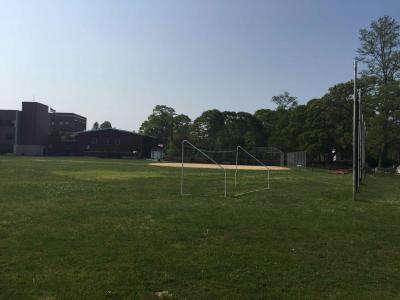Mull Tough Turf Decision

The Sag Harbor School Board shifted its attention on Monday back to the hot-button issue of whether to install synthetic turf on the athletic field at the Pierson Middle and High School, a proposal that stalled due to higher-than-expected costs and stiff opposition from parents.
Voters had approved the use of $1.62 million from the district’s capital reserve fund in 2013 for a synthetic field. Using that money to pay for an organic field would require special state legislation, while supplementing the approved amount to cover the unexpected costs of an alternate kind of synthetic turf would require another public hearing and vote.
Jennifer Buscemi, who heads the district’s educational facilities planning committee, said the committee had initially hoped for a community vote to see whether people favored synthetic turf or natural grass. But, she said, “You can’t have an either-or vote for this.”
Ms. Buscemi said the facilities committee had received word that the $1.62 million earmarked for the turf field would be more than enough to upgrade Pierson’s existing grass field to a better, organic one. She said the district could ask its state legislators, Assemblyman Fred W. Thiele Jr. and Senator Kenneth P. LaValle, to push for special legislation to allow the use of the money for organic instead of synthetic turf, but she warned that because the legislative session ends in June, the district is running out of time. The committee had explored a synthetic option made from manufactured rubber byproducts rather than controversial crumb rubber, which had been proposed and is made from recycled tires.
The board ultimately directed Ms. Buscemi to consult the district attorneys to find out if it even would be possible to get special legislation on the state’s schedule before its session ends.
The options facing the district were made clear just after the board accepted donations of services and materials worth about $16,000 from the Bridge Golf Club in Bridgehampton. Included are treatments such as aeration, feedings, and soil testing, and materials such as gypsum and organic fertilizer. Chris Tice, the school board vice president, explained that the donations would “kind of Band-Aid the field” while the district explores its options.
Gregg Stanley, the superintendent at the Bridge, called the club’s contributions the right thing to do. “I hope to create, and I’m confident we can, a very good, natural stand of grass,” he said by phone on Tuesday. “Really what it appears the property needs is the ability to alleviate the compaction and improve the soil structure. You can do that with new cultivation equipment and methods. It’s technology common to golf courses but is out of reach for a public school.”
During public comment, Susan Lamontagne, a parent who was elected to the school board last week, urged the board to abandon the idea of synthetic turf even if it meant not having a perfect field 12 months a year. “I know you all really care about the health of our kids,” she said. “More research keeps coming out and more questions keep getting raised. . . . At least make an attempt to have a spectacular organic grass field.”
Ms. Tice said one of the next steps should be “a robust public discussion, which I think we need and I think the community has told us they expect.”
The board will meet again at 6 p.m. on Tuesday, during which it will hold a public hearing on the use of reserve fund money for site work related to construction projects.
